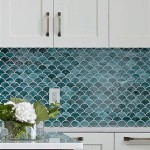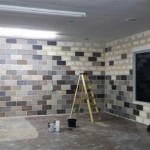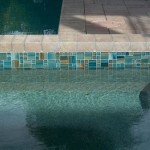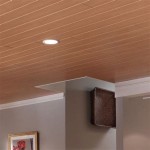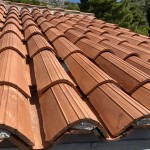Can I Put Ceramic Tile on Sheetrock?
Ceramic tile is a popular flooring choice due to its durability, versatility, and aesthetic appeal. However, installing ceramic tile directly on sheetrock can be a tricky endeavor. While it might seem like a straightforward process, there are important factors to consider that can significantly impact the success and longevity of your tile installation.
Understanding the Challenges
Sheetrock, also known as drywall, is a common wall and ceiling material. It offers a smooth surface for finishing and is relatively inexpensive. However, sheetrock lacks the structural integrity and moisture resistance required to support ceramic tile. Here are some key challenges associated with installing ceramic tile directly on sheetrock:
1. Weak Substrate: Sheetrock is a relatively flimsy material. The weight of the tile and grout can put significant stress on the sheetrock, potentially leading to cracking, sagging, or even detachment from the wall or floor. This is especially problematic in areas prone to moisture, like bathrooms or kitchens, where the tile is more likely to be subjected to water exposure.
2. Moisture Sensitivity: Sheetrock is susceptible to moisture damage. When water penetrates the sheetrock, it can expand and weaken the material, causing it to warp or rot. This can damage your tile installation and may lead to mold growth. Ceramic tile, being a porous material, can absorb water, and the grout between tiles can become porous over time. Combined with sheetrock's vulnerability, this creates a recipe for potential moisture-related issues.
3. Uneven Surfaces: Sheetrock surfaces can be uneven, making it challenging to achieve a smooth and consistent tile installation. Any irregularities in the sheetrock will be reflected in the tile installation, leading to a less aesthetically pleasing and potentially structurally compromising finish.
Alternatives to Direct Installation
Given the challenges associated with direct installation, it is generally recommended to consider alternatives to installing ceramic tile directly on sheetrock. These alternatives often involve reinforcing the sheetrock with a stronger and more moisture-resistant substrate to provide a stable base for the tile.
1. Backer Board: Backer board is a specialized tile substrate made from cement or fiberglass. It is significantly stronger and more moisture-resistant than sheetrock, making it an excellent choice for tile installation. Backer board is available in various thicknesses and can be easily cut and installed using standard tools.
2. Cement Board: Cement board is another popular tile substrate made from Portland cement and other aggregates. It offers high strength, durability, and moisture resistance, making it ideal for areas prone to moisture. Cement board requires specialized fasteners and tools for installation and is typically heavier than backer board.
3. Mortar Bed: In some cases, a mortar bed can be used to create a stable and moisture-resistant base for tile installation. This involves applying a thick layer of mortar over the sheetrock before setting the tile. This approach is labor-intensive and requires specific skills for proper application and curing.
When Direct Installation Might Be Possible
While installing ceramic tile directly on sheetrock is generally discouraged, there are specific situations where it might be possible, but it requires careful planning, preparation, and adherence to best practices:
1. Low-Traffic Areas: If the tile installation is in a low-traffic area like a guest bathroom or a decorative accent wall, and the sheetrock is in good condition with no signs of moisture damage, direct installation might be considered. However, a moisture-resistant primer should be applied to the sheetrock before installing the tile.
2. Lightweight Tiles: Using lightweight tile options, like porcelain or ceramic tiles with a thin profile, can reduce the stress on the sheetrock. However, it's still crucial to ensure a secure bond between the tile and the sheetrock by carefully following the manufacturer's instructions and using a high-quality tile adhesive.
3. Additional Reinforcement: In some cases, you can consider adding extra reinforcement to the sheetrock to increase its strength and support the tile installation. This may involve using specialized screws, anchoring the sheetrock to the wall studs, or applying a layer of fiberglass mesh over the sheetrock before installing the tile.
It is important to note that even in these scenarios, direct installation on sheetrock should be considered a last resort. It is always recommended to consult with a qualified professional to ensure proper preparation and installation techniques to prevent future problems with the tile installation.

How To Prepare Drywall For A Tile Backsplash Mr Handyman

Can You Tile Over Drywall Master Building Materials Blog

Can I Tile Over Drywall Tiles Of Europe

How Much Tile Weight Can Drywall Hold

Can You Install A Ceramic Tile Backsplash On Drywall Wkrg

How To Install Ceramic Tiles On Painted Walls Pma Imperio

How To Add L And Stick Tile A Wall Drywall

How To Tile Over Existing Brepurposed

Can You Tile Onto Plasterboard A Comprehensive Guide

Ceramic Wall Tiles Hometips
Related Posts

